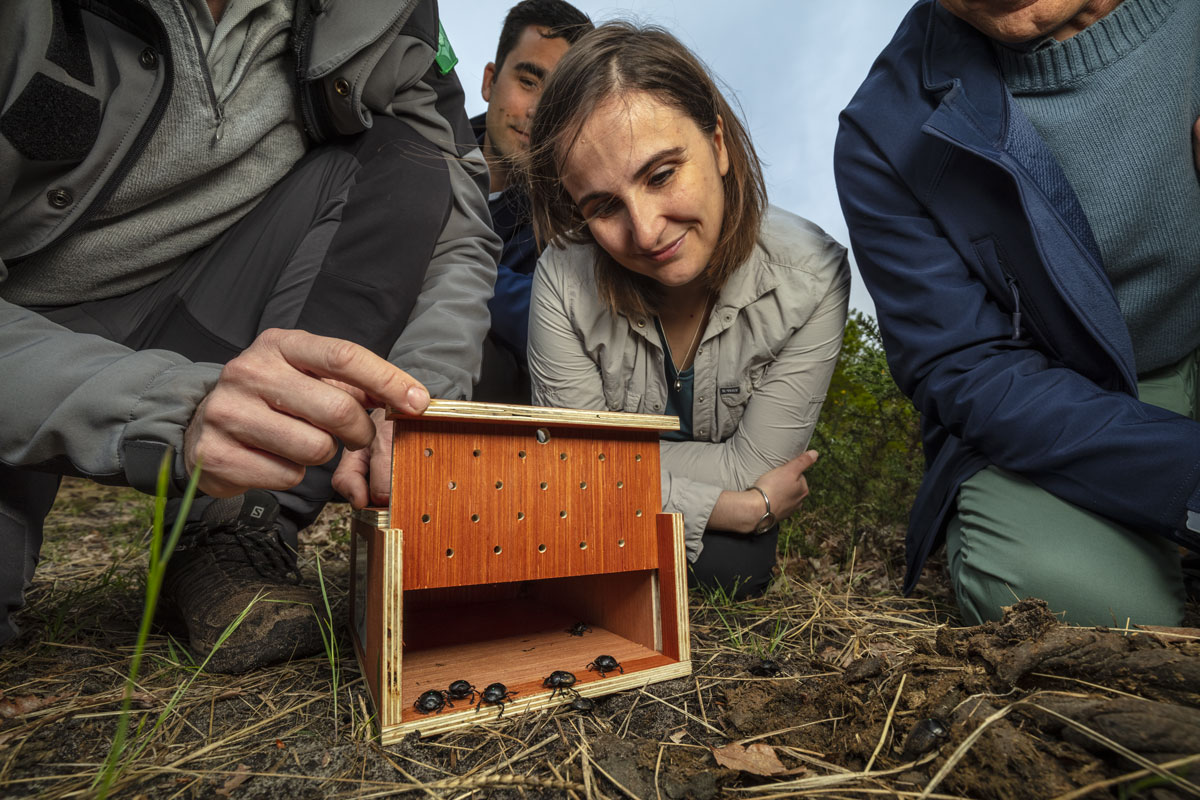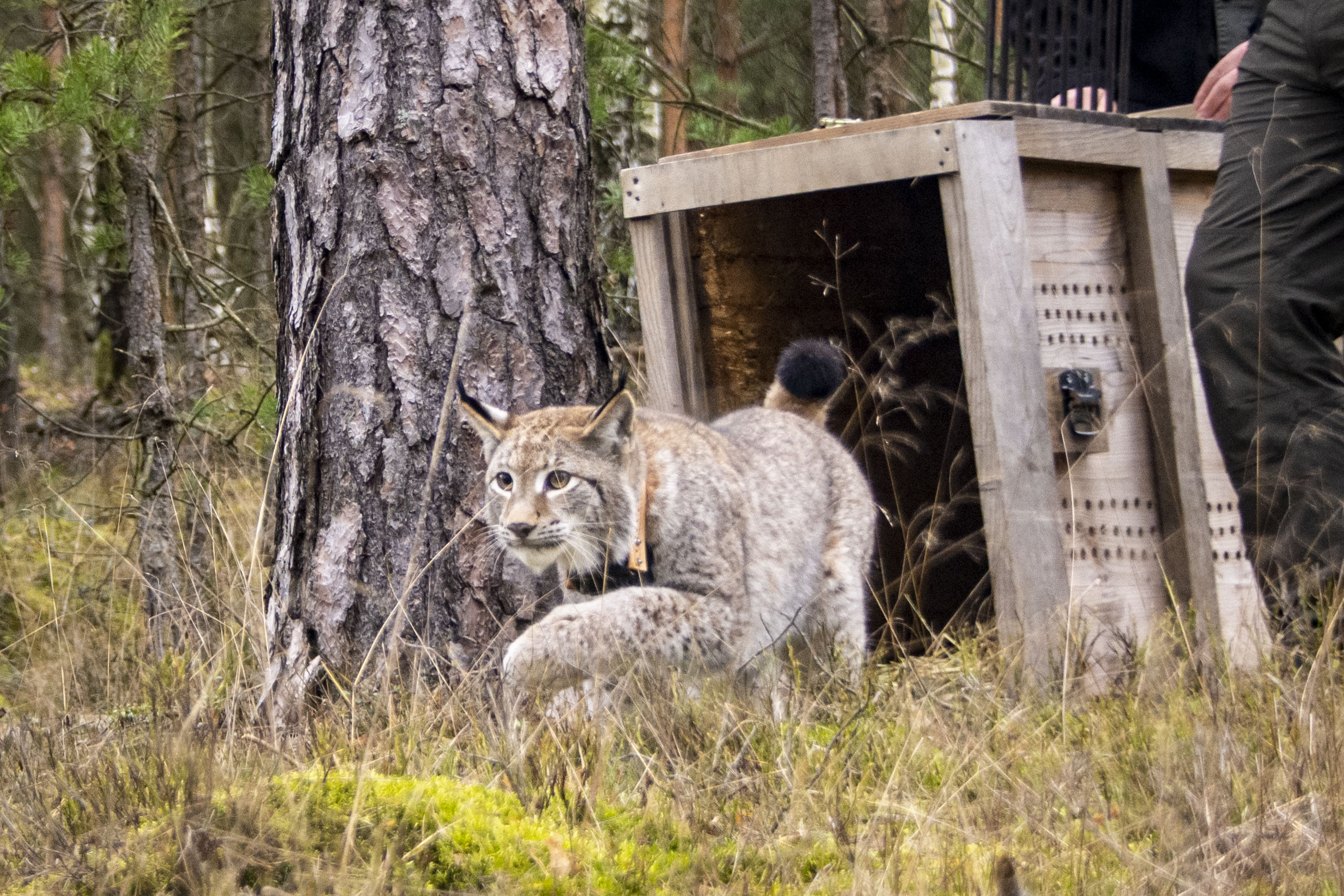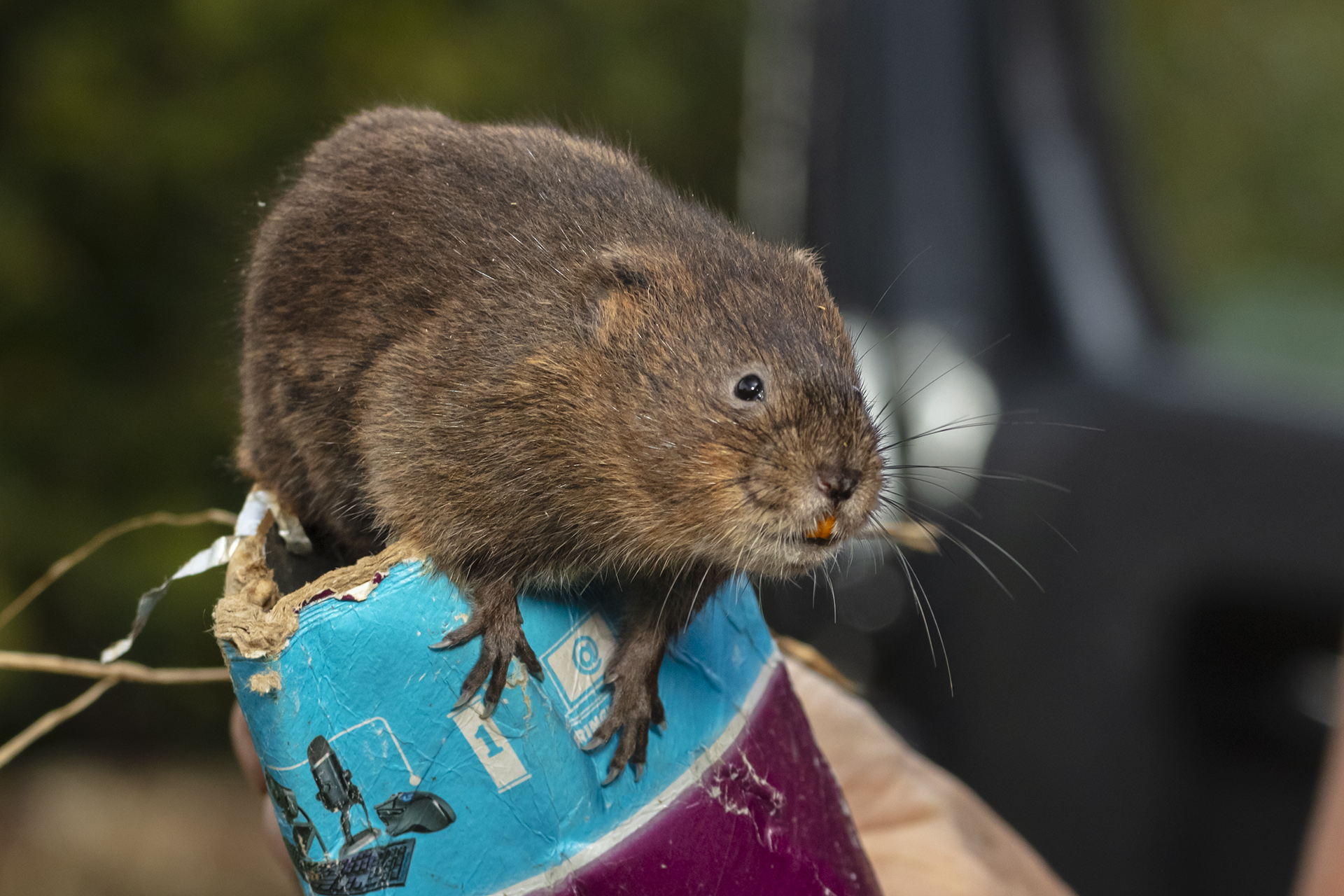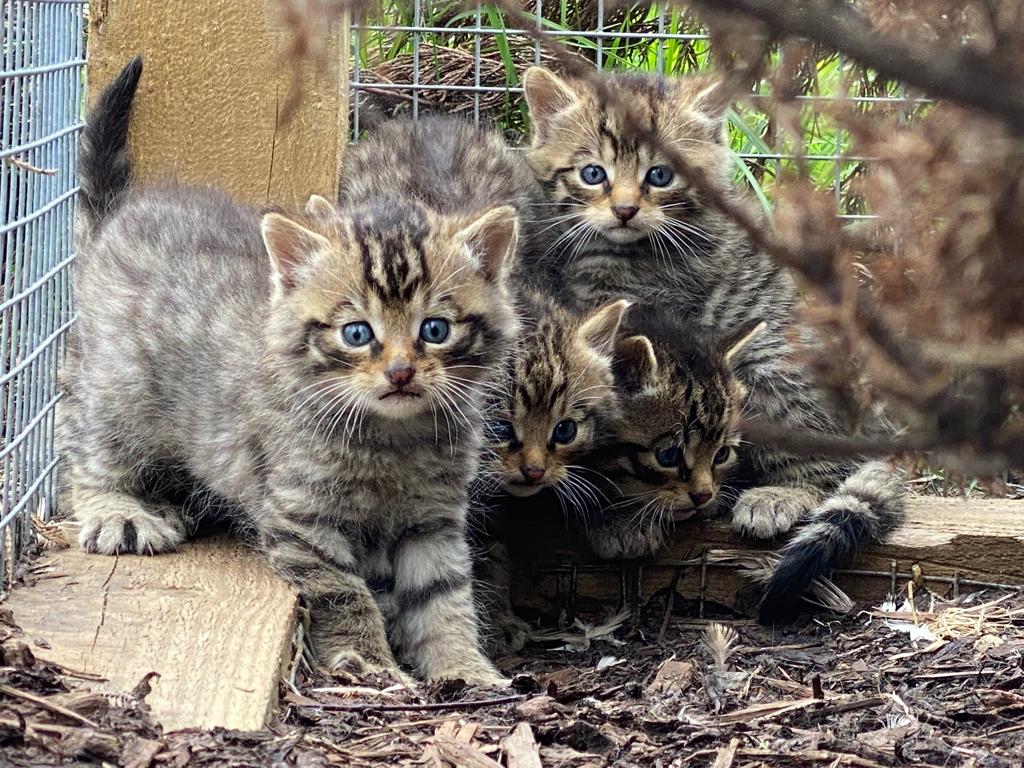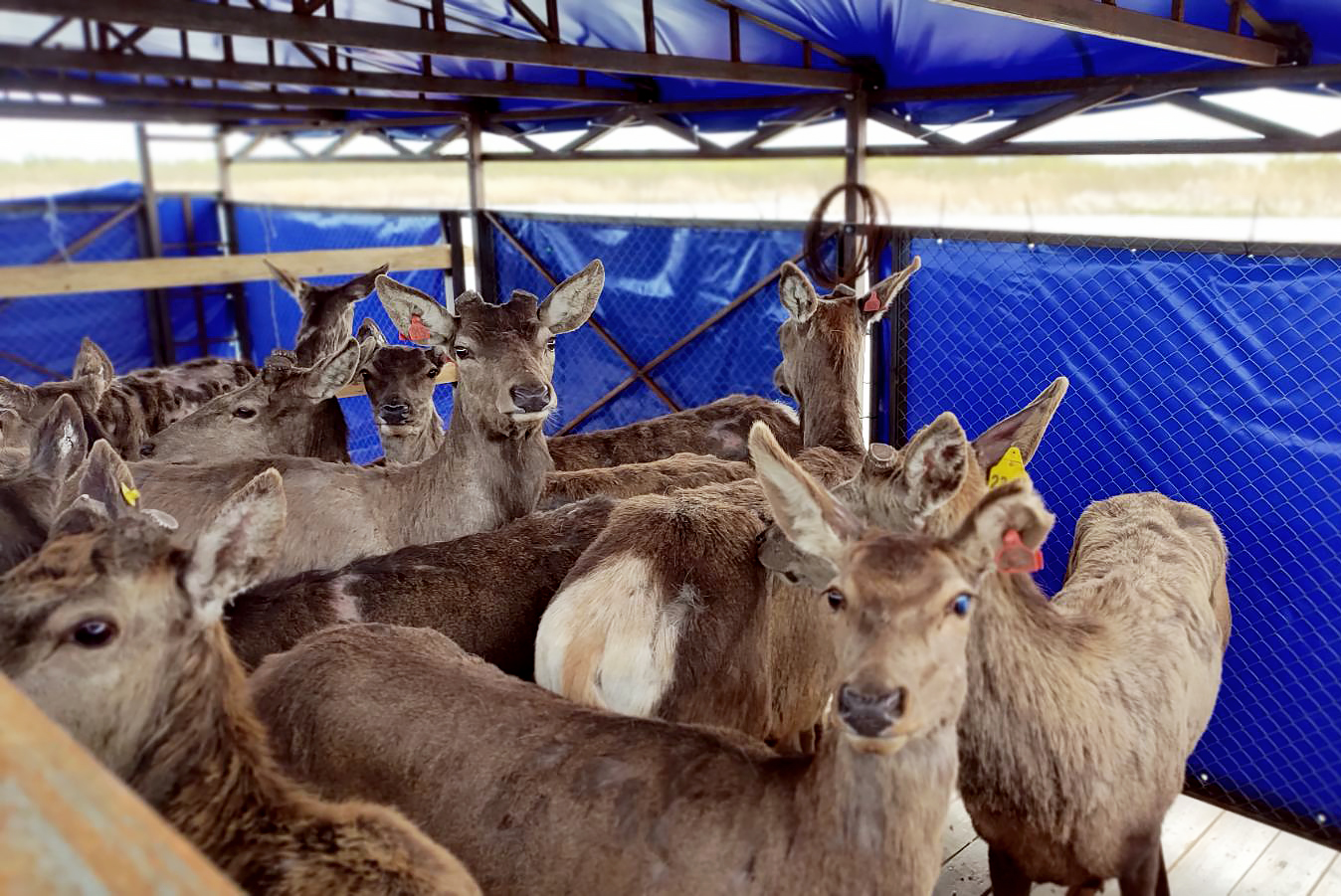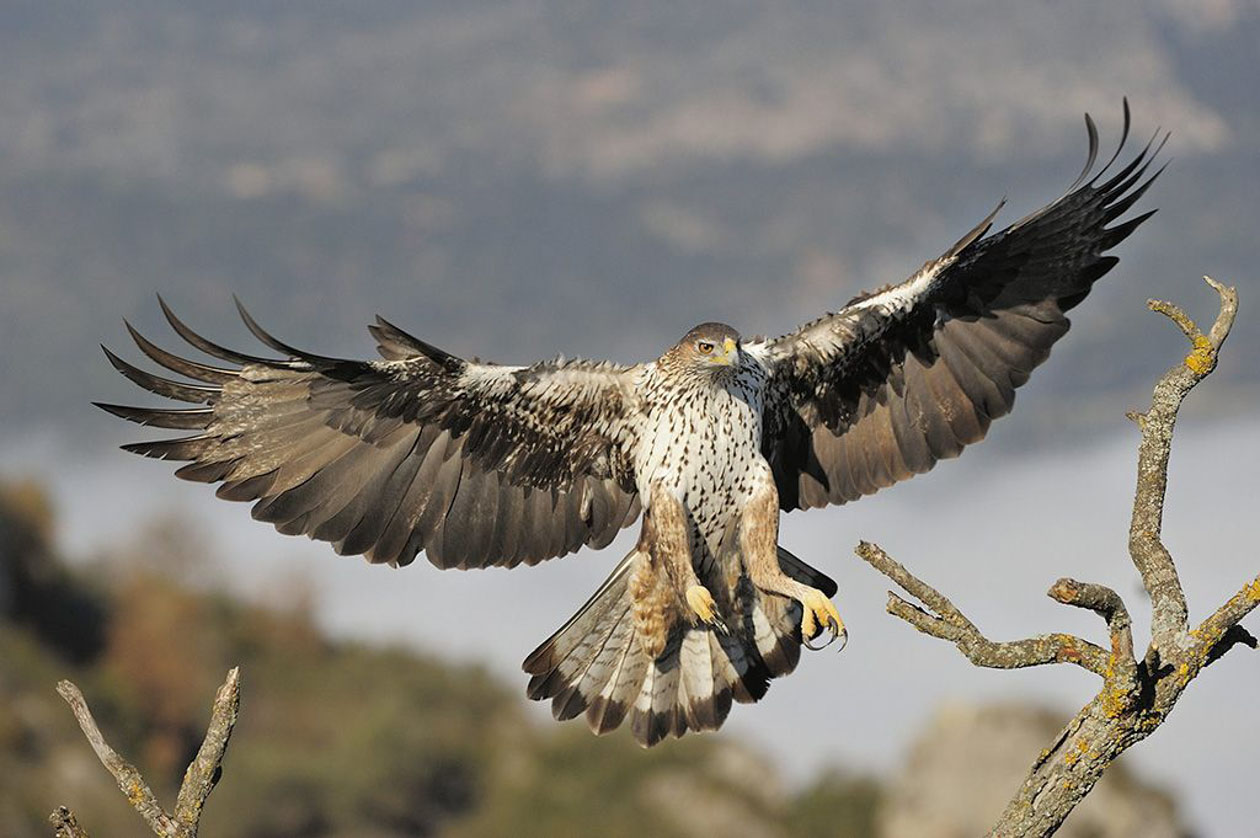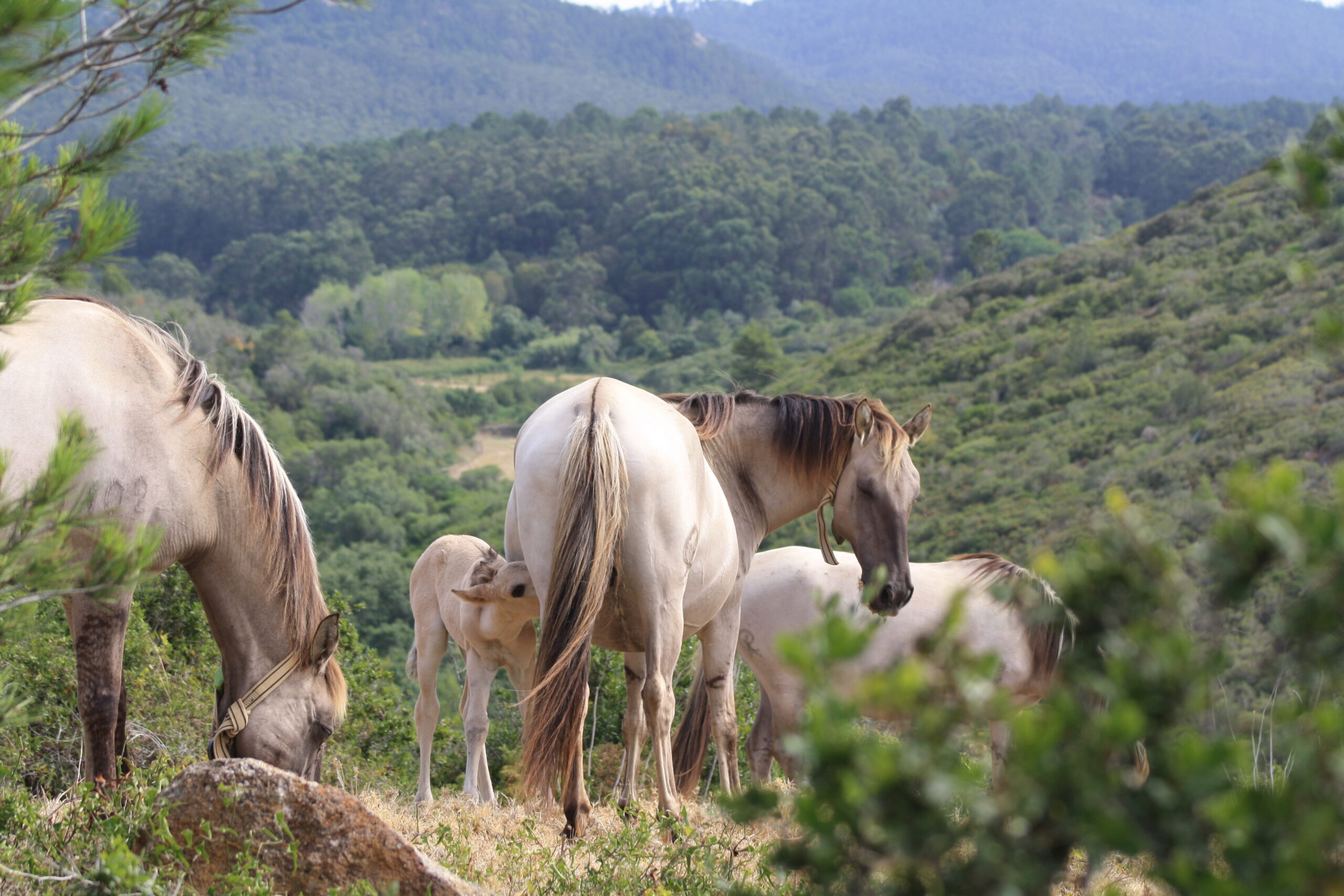The European wildcat is in danger of extinction in Portugal. The first confirmed sighting of a wildcat within a Greater Côa Valley rewilding site is therefore great news, highlighting the importance of landscape restoration efforts and targeted population support measures.
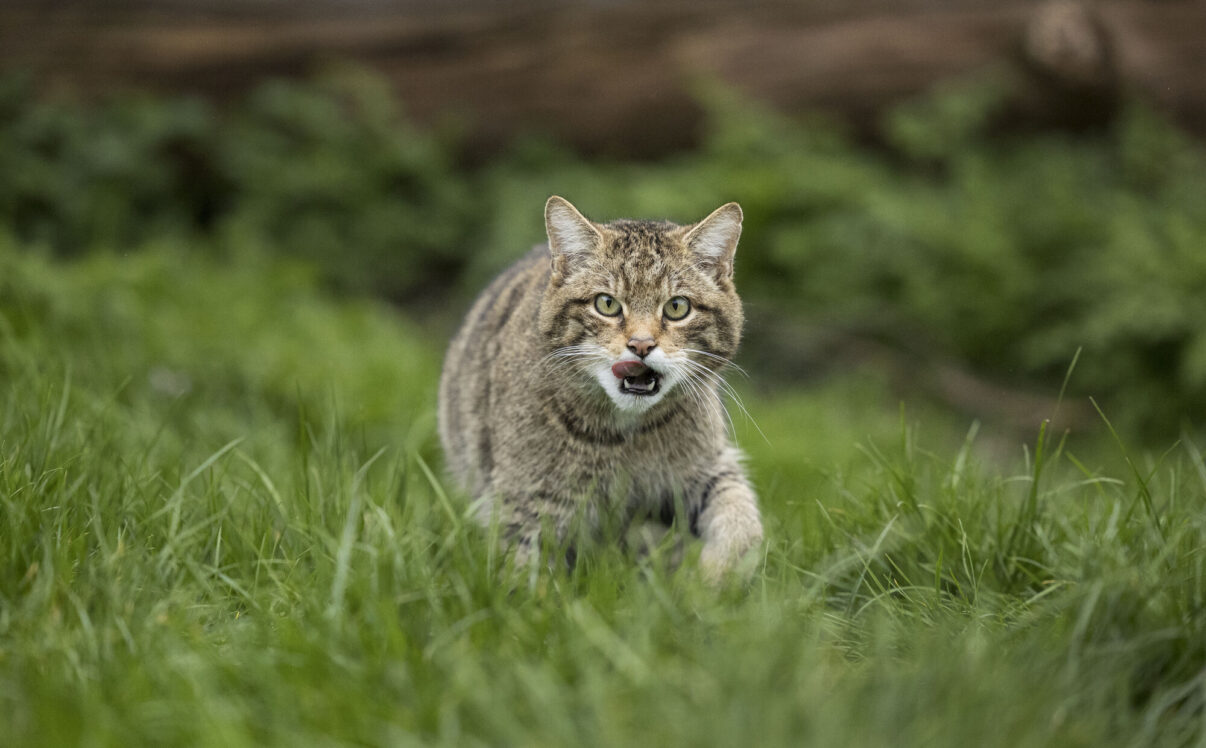
European wildcats in danger
Today, large carnivores such as wolves and Eurasian lynx are making a comeback across many parts of Europe. This is great news – not just because these are iconic, awe-inspiring animals in their own right – but also because these keystone apex predators play an important role maintaining the health and balance of ecosystems. But there are smaller, less well-known European carnivores in Europe that also play an important ecological role, and which are equally deserving of our attention. One of these is the European wildcat.
A small feline with brown mottled fur and striped markings, the European wildcat is native to continental Europe, Scotland, Turkey, and the Caucasus. While it is listed as “least concern” by the IUCN, populations are becoming disconnected across much of its range as a result of significant declines, driven by factors such as habitat loss and fragmentation, traffic accidents, disease, and hybridisation with domestic cats. The latter, which can lead to the loss of genetic variation or specific adaptations, means there may be very few genetically pure European wildcat populations remaining.
A surprise discovery
In Portugal, the European wildcat is close to extinction, with less than 100 adult cats thought to be roaming free in the wild. So when one showed up recently on a camera trap, set up by the Rewilding Portugal team at the Paul de Toirões rewilding site within the Greater Côa Valley, Rewilding Portugal field officer Pedro Ribeiro was understandably thrilled and surprised.
“When I came across the first photo of the cat I almost jumped out of my chair,” says the biologist. “It’s extremely rare to come across wildcats in Portugal – particularly in the Côa region. It looked very much like a wildcat in the image, but because they are difficult to distinguish from domestic cats, which often show up on camera traps, we needed to do a bit more work to be sure.”
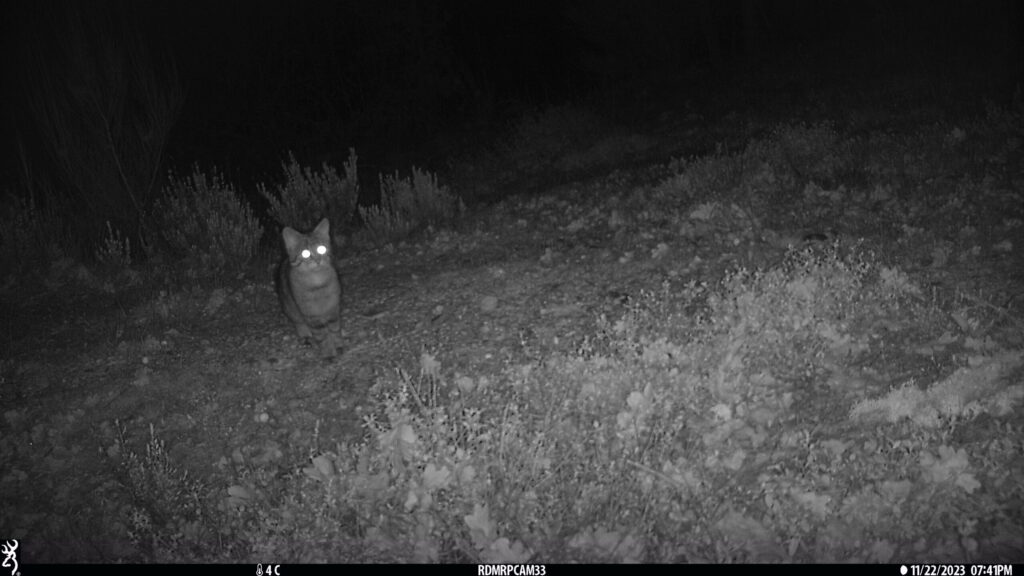
Positive identification
To confirm the sighting, Pedro consulted with experts from Portugal’s Institute for Nature Conservation and Forests (ICNF). A field survey was subsequently carried out by members of the Rewilding Portugal team, which saw scat collected from the rewilding site. This was sent to the laboratory of Rewilding Portugal’s strategic partner CIBIO-BIOPOLIS at the University of Porto, where the CONGEN group, led by Paulo Célio Alves, are developing a genetic and hybridisation study of Iberian wildcats. Members of the group were able to confirm, through genetic analysis, that the animal captured on the camera trap was indeed a wildcat.
“This is the first time a wildcat has ever been positively identified in one of our Greater Côa Valley rewilding sites,” says Pedro Ribeiro. “According to Portugal’s Red Book of Mammals, this is the first confirmed sighting in the Greater Côa Valley, outside of the Serra da Malcata, in more than 30 years. So it’s amazing that one has shown up here.”
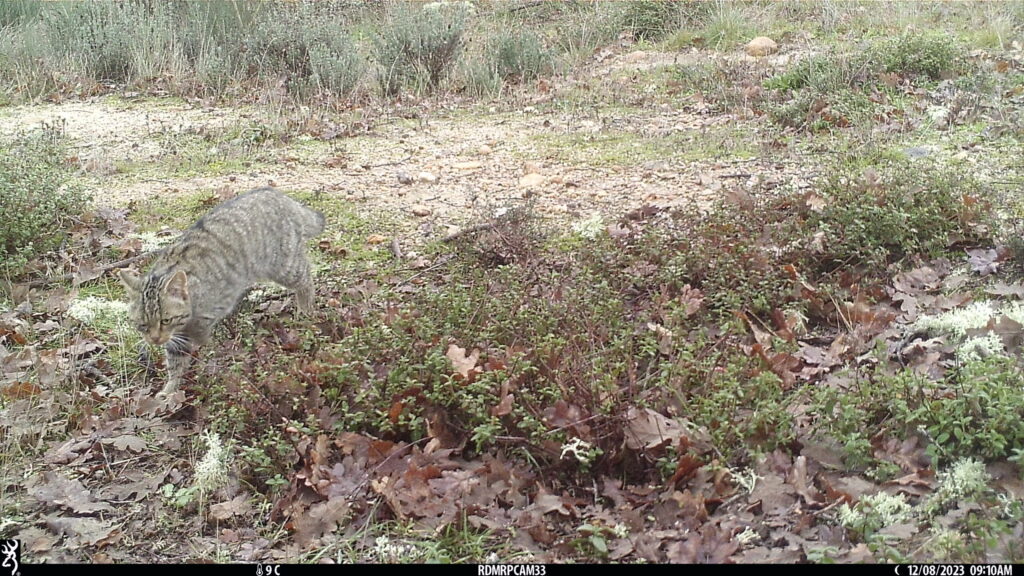
Critical connectivity
The Rewilding Portugal team are establishing a growing number of rewilding sites within the Greater Côa Valley, as they develop a 120,000-hectare wildlife corridor to connect the Malcata mountain range in the south with the larger Douro Valley in the north. As ecological stepping stones, these sites enhance landscape connectivity. They also act as refuges where a diverse range of wildlife species can recover and thrive. The confirmed sighting of a wildcat within one of these sites shows that the team’s ongoing restoration efforts are bearing fruit. Studies have shown that landscape connectivity plays a critical role in enabling European wildcats to disperse and boost genetic diversity.
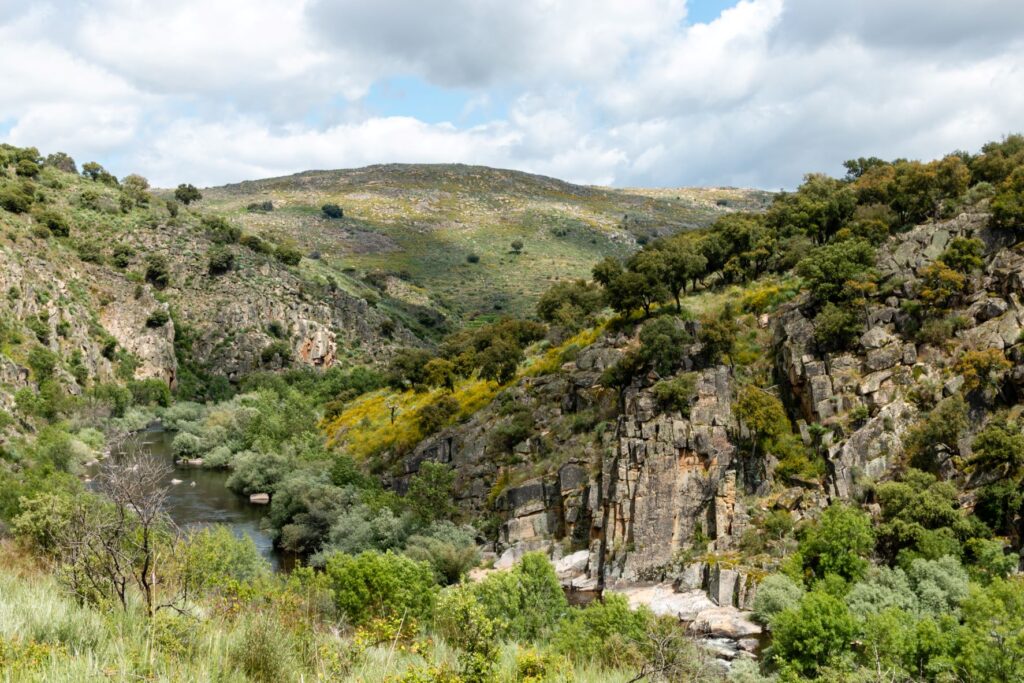
Additional support measures
Skilful hunters, wildcats help to keep local ecosystems in balance by feeding on rabbits and small rodents such as voles. In addition to the various factors driving wildcat population decline across Europe, the huge drop in European rabbit numbers on the Iberian Peninsula over the last century – which has been caused by the myxomatosis virus, viral haemorrhagic disease, and habitat loss – has also had a negative impact on local wildcat populations.
The Rewilding Portugal team are working to increase the abundance of rabbits in the Greater Côa Valley through population reinforcement, measures to restore habitat, and by working with hunters and private landowners. This benefits other predators such as the Iberian lynx. They are also planning to support wildcats by supporting the sterilisation of domestic cats found in close proximity to rewilding site where the sighting was confirmed, to lower the risk of hybridisation.
In 2023, a grant from Rewilding Europe’s European Wildlife Comeback Fund was used to support the release of 19 European wildcats in Scotland’s Cairngorms National Park, with more releases planned this summer.
Examples of releases supported by the European Wildlife Comeback Fund
Invaluable support
Rewilding Portugal’s efforts in the Greater Côa Valley are supported by the Endangered Landscapes & Seascapes Programme.
Rewilding Europe’s work across our rewilding landscapes is supported by a wide range of highly valued partners. We would particularly like to acknowledge those providing core funding – notably the Ecological Restoration Fund, the Dutch Postcode Lottery, WWF-Netherlands, and Arcadia. Their longstanding support plays a critical role in enabling us to deliver and scale up rewilding impact.

